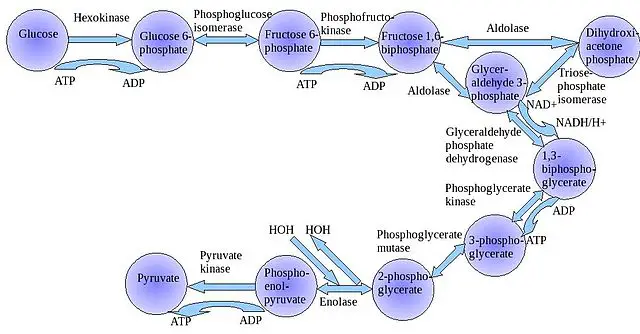Glycolysis refers to a metabolic process that involves the breakdown of glucose into pyruvate or pyruvic acid. Food taken in by the body will include glucose, a type of sugar that basically comes from carbohydrate. Food items such as rice, bread, and ice cream are carbohydrate-rich foods and provide the body with energy in the form of glucose. The cells in the body basically need glucose for energy but before energy is produced, this substance must be processed and broken down first through a process called glycolysis.
The breakdown of glucose into pyruvate will result in the release of energy in the form of ATP or adenosine triphosphate. ATP is considered the most important energy source for cells for metabolic purposes. Through ATP, various cellular processes will be supported. One of these processes is cell division or multiplication. Cells need energy to be able to undergo growth and development. In order for this to happen, cells will go into a process called mitosis which involve several stages. All these stages need energy in the form of ATP, which is generated and created through glycolysis.
Two ATPs are created through glycolysis for every molecule of glucose. The more glucose is present in the body, the more ATP or energy can be produced to support metabolic and cellular processes. The great thing about ATP created through glycolysis is simply converted back to its precursor substances after they are used. In the process of cell division for example, all ATP molecules used up will basically be broken down to its original precursors and become available again to be recycled into energy in another glycolytic process. The recycling of ATP or energy helps support cellular and metabolic processes to continue round the clock and the body only needs a food source to initiate glycolysis and start the energy-producing cycle continuously.










